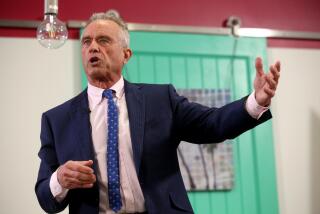School bonds are popular, but polls show the big one on the ballot is struggling

Sacramento — New spending on school construction tends to be reliably popular when proposed in California ballot measures.
According to the League of California Cities, voters approve about 80% of bond measures for local school districts — even though state rules require 55% support on a measure for it to pass. The last four statewide school bond measures were approved by voters. And nearly 6 out of 10 likely voters back the idea of a new school bond on the ballot, according to an October poll by the Public Policy Institute of California.
Yet Proposition 51, the $9-billion school bond measure on next week’s ballot, is struggling, according to PPIC polls from the last two months. In both polls, Proposition 51 stood below majority support, and such numbers put the measure at risk of a rare failure, said Mark Baldassare, PPIC’s president and CEO.
“It’s not where we would expect it would be,” Baldassare said.
Beyond the general popularity of schools, Proposition 51 has many of the advantages that come alongside successful campaigns.
The state Democratic and Republican parties, business and labor groups and Lt. Gov. Gavin Newsom and other major politicians are part of a broad coalition in favor. Those supporters, primarily developers, contractors and others who regularly promote school facility construction, have raised $12 million for the campaign, compared with nothing for opponents.
And schools across the state need more money. Schools should be spending between $4 billion and $8 billion a year on building replacement and upgrades, according to the nonpartisan Legislative Analyst’s Office, and the state pot of money to pay for these fixes has run dry.
Still, there are plenty of explanations for Proposition 51’s troubles. Most notably, unlike the past, support isn’t universal among major interests. Lawmakers put the four previous statewide school bonds on the ballot themselves. This time, after negotiations with Gov. Jerry Brown and legislators failed, backers gathered signatures for an initiative. Brown hasn’t spent much time campaigning against Proposition 51, but when asked, he’s criticized it as too large and inefficient.
“This has been a funding area that has had very strong bipartisan support for decades,” said Jeff Vincent, deputy director of UC Berkeley’s Center for Cities + Schools. “We are now at a place in California where that is not the case.”
Brown and others have questioned how state school bond money gets spent. They argue that the program unfairly benefits larger, more affluent districts. The cash is available to local districts that already have funding to match the state dollars and is distributed on a first-come, first-served basis.
Last month, outgoing state Sen. Loni Hancock (D-Berkeley) urged her Facebook followers to vote against Proposition 51, saying that voters should hold out for a better measure sponsored by the Legislature in coming years. Hancock served on the board that hands out the bond money and, in an interview, described the spending process as overly complex and cumbersome. She said she had to fight those rules to get a school in her district funds for earthquake safety.
“I think we can do a better bond with more money going in a simple, direct way for our schools,” Hancock said.
PPIC’s polls show similar drops across voters of all income and education levels and ethnicities when asked about Proposition 51 compared with the generic school bond measure. Proposition 51’s official summary, which appears on voters’ ballots, states that the measure will raise $9 billion and cost $17.6 billion to pay off over 35 years. Those big numbers could be keeping Proposition 51’s polling low, Baldassare said.
“I would have to think it has something to do with the size of the bond and the impact on the budget,” he said.
Erin Shaw, spokeswoman for the Yes on 51 campaign, said aspects of the PPIC polls look good for her side. The October poll has the measure leading — 46% to 41% — and there are plenty of undecided voters.
Shaw said the campaign expects the results could track with previous state school bond measures, the lowest of which passed with just 50.9% of the vote in 2004.
“We have had a strong campaign in which we have been able to garner a significant amount of broad and bipartisan support for the measure,” Shaw said.
She noted that local districts have bond measures of their own on ballots — 184 of them that aim to raise $25 billion statewide — and believed voters ultimately will link their desire to repair their local schools with money from the state.
Follow me at @dillonliam on Twitter
ALSO
What you need to know about the $9-billion school bond on the ballot
Gov. Jerry Brown opposes $9-billion school bond measure
School bonds used to be as controversial as mom and apple pie. Not anymore under Gov. Jerry Brown
Updates on California politics
More to Read
Get the L.A. Times Politics newsletter
Deeply reported insights into legislation, politics and policy from Sacramento, Washington and beyond. In your inbox three times per week.
You may occasionally receive promotional content from the Los Angeles Times.











